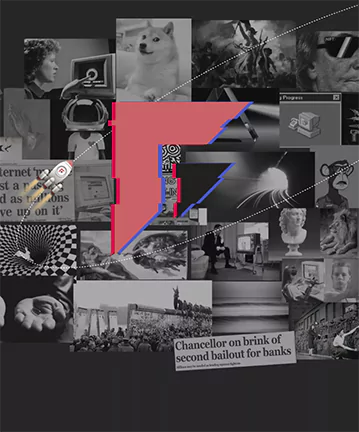03/25/2025
AI
Enterprise
Nexthop AI: Next-generation Networking for an AI-driven World
Nexthop AI is building networking infrastructure for hyperscale cloud providers with an intense demand for the cutting-edge.

Current networking technology has not kept up with the growth of the cloud and isn’t on track to keep up with the pace of AI. There’s a massive and growing demand posed by increasingly large AI workloads, and incumbent vendors are not positioned to seize the opportunity.
That’s why we’re excited to announce Lightspeed’s lead investment in Nexthop’s $110 million Series A round. We’ve known Anshul Sadana, founder of Nexthop AI, for over a decade, and the scale of the opportunity and the depth of talent Sadana is leading make for a perfect match.
Sadana founded Nexthop AI in 2024 and played important roles at Arista Networks for 17 years, including Chief Customer Officer and Chief Operating Officer. There, he led the company’s growth across cloud and enterprise markets while overseeing hardware design, manufacturing, supply chain, sales, and support.
When the chance came to pursue the opportunity he saw in Nexthop, it was clear we wanted to back Sadana and his team as they build the future of networking.
Networking as the next big infrastructure-level opportunity
With the rise of AI networking and the explosive growth of AI workloads, new opportunities in networking infrastructure are opening up. A $75B total ethernet switching market by 2029, including a $35B cloud segment, stands ahead of the Nexthop team, and we’re excited to back them the whole way.
This growth — and the seismic upheaval and resulting demand for AI workloads more broadly — make current cloud-switching infrastructure open to disruption. The Nexthop team saw that AI workloads would require networking infrastructure that needs to be tightly integrated with GPUs and require a level of customization that the current networking stack cannot provide. Despite that incoming need, very few companies are able to execute in this new wave.
Traditional networking vendors — companies like Cisco and Juniper — have long struggled with quality and execution issues. Back in 2008, Arista Networks wedged an opening in the market by pioneering Cloud Networking, which eventually led to it leading the global high-speed DC switching market.
AI workloads are increasing exponentially, and there are a small number of hyperscalers — each investing billions of dollars — that are in special need of highly customized technology. The expanding market is ripe for a new entrant.
Next-generation networking for hyperscale cloud and AI
Nexthop AI provides customized hardware, software, and optics solutions through a JDM (Joint Development Manufacturer) model.
The networking stack has always been complex, but AI workloads are accelerating the rate of change to even faster speeds. The JDM model is, therefore, the perfect fit for an increasingly AI-driven world and bridges the gap between the classic build vs buy options hyperscalers have used in the past.
Already, Nexthop provides a solution that stands out from the rest of the market. Custom board designs with the latest merchant silicon chips from companies such as Broadcom provide superior signal integrity, and air-cooled and liquid-cooled options support a wide range of cooling requirements, pre-integrated with the customer’s preferred operating systems. This tightly coupled process makes hyperscaler deployments far more efficient.
Why Nexthop AI is the right team
Nexthop AI has the right team, at the right time, positioned for success in a market already on a steep upward growth trajectory.
After nearly 17 years at Arista Networks, Sadana knows the networking market better than anyone, and an exceptional — and growing team — is behind him. The team at Nexthop consists of almost a hundred engineers from other networking companies and hyperscalers like Google and Amazon. The customer engineering team has deep experience in networking — a market where the sales process tends to be long and complex.
Nexthop AI is positioned to become the next major force in networking infrastructure and a key player supporting the adoption and scalability of AI. We’re thrilled to partner with Anshul and the entire Nexthop team as they transform the networking industry.
The content here should not be viewed as investment advice, nor does it constitute an offer to sell, or a solicitation of an offer to buy, any securities. Certain statements herein are the opinions and beliefs of Lightspeed; other market participants could take different views.
Authors




